Through the heart of South Korea
3 Comments
The rest of the World Heritage sites are scattered around the country. My schedule was made possible by two factors. South Korea is a country of compact size – an hour by plane from north to south. The transportation infrastructure is very efficient and quite inexpensive.
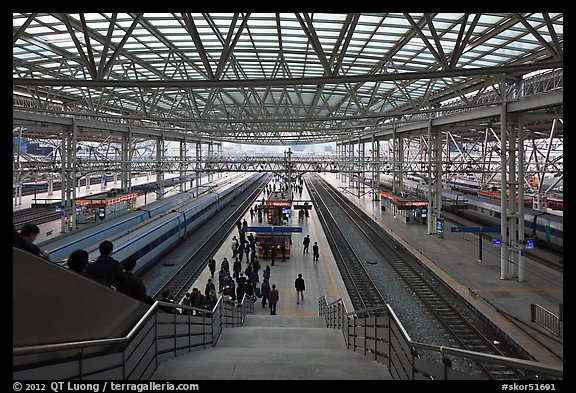
In the morning, I took a high-speed train from Seoul to Deagu (South Korea’s fourth largest city) with free Wi-Fi on board. Upon arriving, I left my backpack at an automated locker – activated by fingerprint recognition.
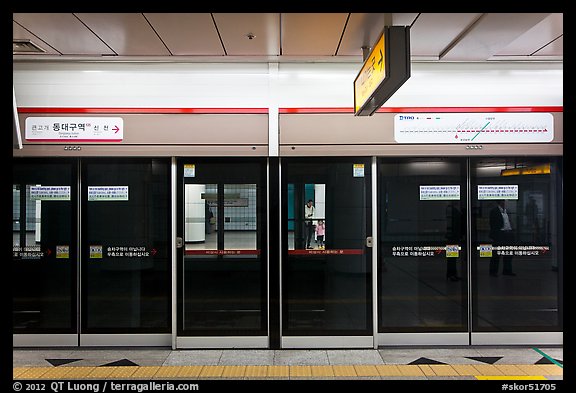
After obtaining all the travel information at the tourist kiosk (the only place where one is sure to get questions answered in English) in front of the station, I hoped onto the Daegu subway.
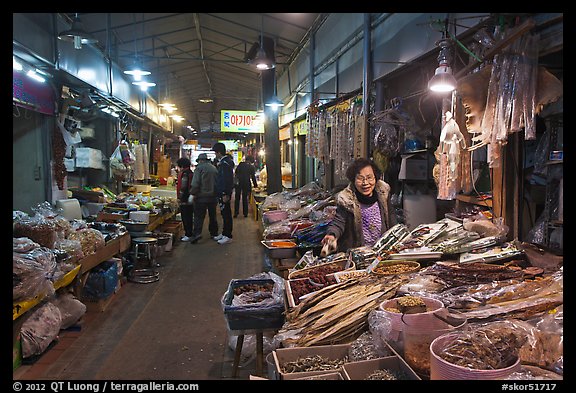
Since I had a bit of extra time, I checked out the traditional medicine market which was on the way.
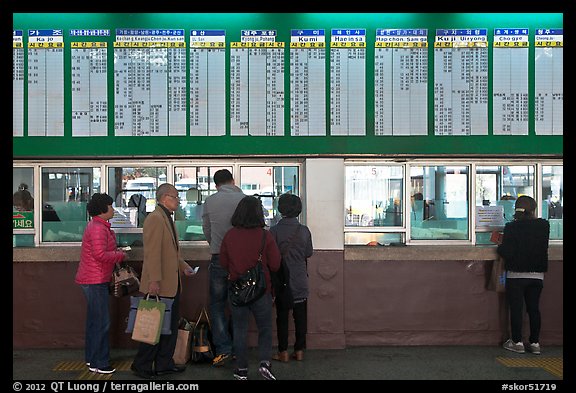
I went to the city terminal to catch a bus to a remote mountain outpost.
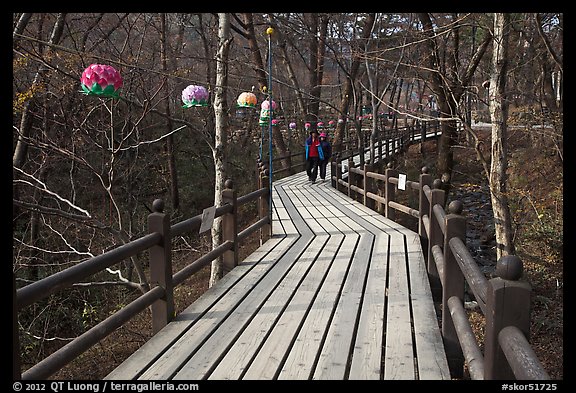
After a 2 km hike in the forest, I arrived at the Haeinsa Temple temple, one of the most important and remarkable in the country, around 3pm.
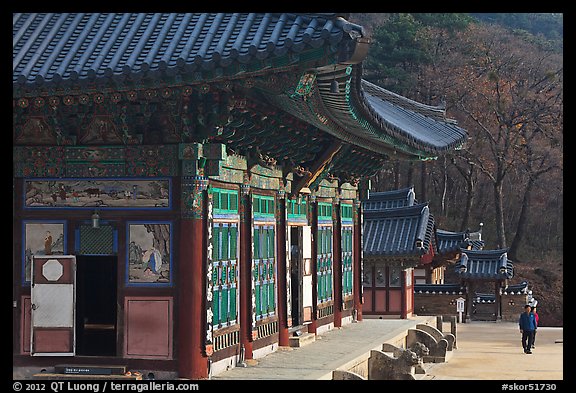
Haeinsa is one of the Three Jewel Temples (three principal Buddhist temples) of Korea and represents Dharma or the Buddha’s teachings (the two others represents the Buddha, and the sangha or Buddhist community). As such, Haeinsa is most noted for holding the Tripitaka Koreana, the whole of the Buddhist Scriptures carved onto 81,350 wooden printing blocks. The 14th century building holding the blocks at Haeinsa was so ingeniously designed that it surpassed modern preservation techniques. When test woodblocks were moved to a modern storage complex, they developed mildew, so the intended move was canceled and the woodblocks remained at Haeinsa.
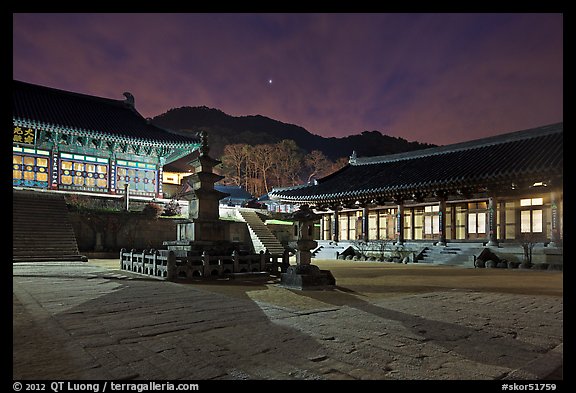
I stayed until dark. In the solitude of the now deserted temple, the chants of the monks in the main hall were magical, but I had to be sure not to miss the last bus back to Daegu.
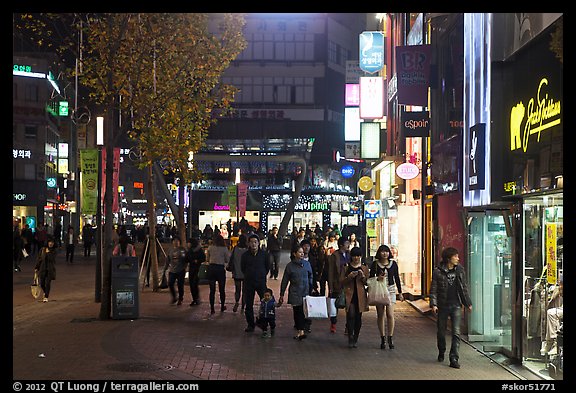
Despite the late hour, the main shopping areas of Daegu, where I went to look for dinner, were still busy. I had yet another Bibimbap, a signature Korean dish – and the only one suitable for a vegetarian.
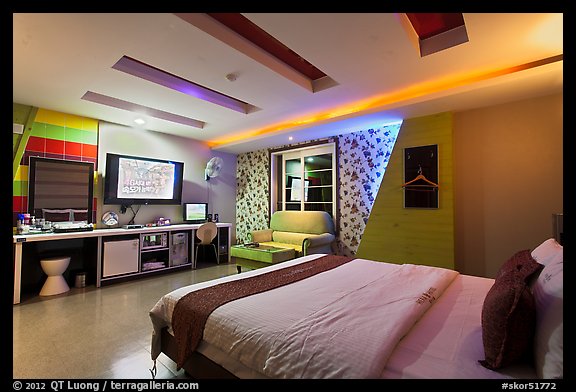
I checked in a motel. Despite their name, those establishments have little in common with the motels in the US, besides maybe an affordable rate. My room had designer interior decor and lights (all remotely controlled), a huge flat screen TV, fridge, microwave, computer – fast connection, but no wifi, so much for Facetime – all for less than $50.
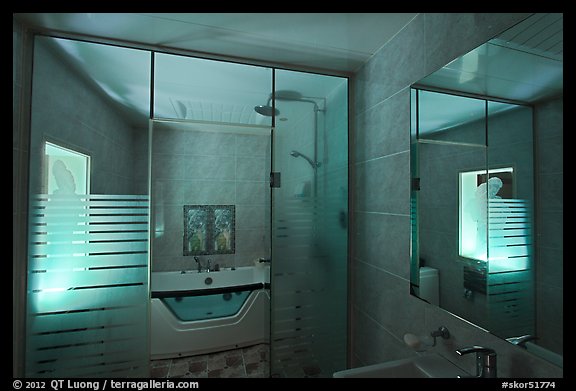
Motels are in fact “love hotels”. The bathroom had a huge bathtub which can easily accommodate two. A light which varied continuously in color illuminated the etching in the glass between the bathroom and the bedroom.
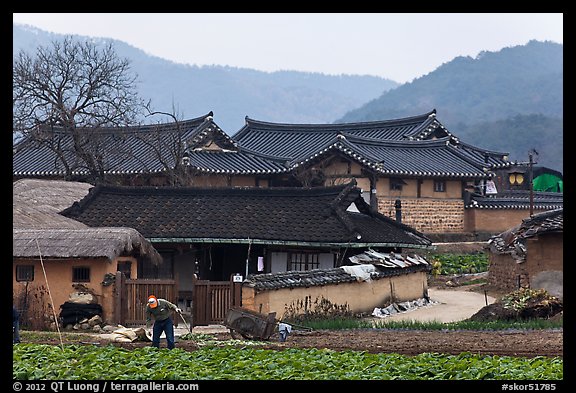
I got up before daybreak and took a long-distance bus to Andong. From there, after another local bus ride, I arrived in Hahoe Folk Village, a authentic traditional village dating back from the Joseon Dynasty in the 16th century.
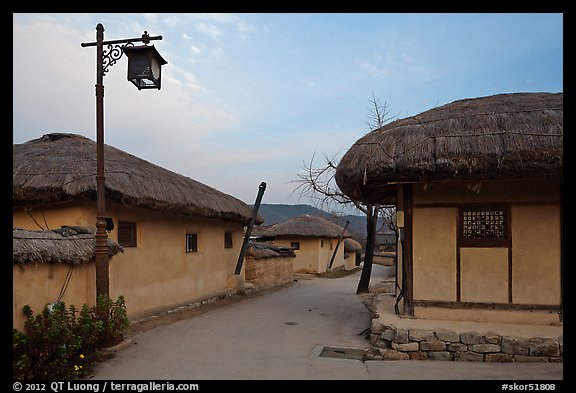
Hahoe Folk Village is home to old architectural styles that have been lost elsewhere because of the rapid modernization in South Korea, including Aristocratic tile-roofed residences and thatched-roof servants homes.
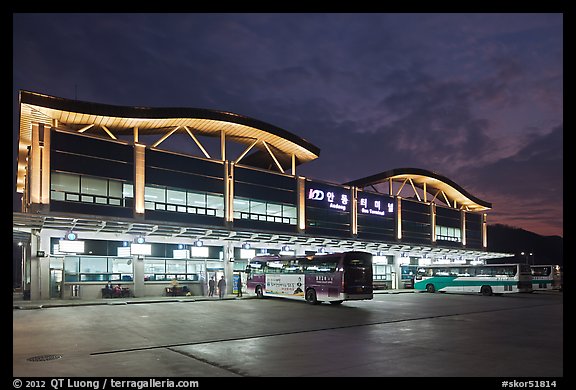
Back to Andong, I boarded another bus to Gyeongju.
See more images of Haeinsa
See more images of Hahoe Folk Village


Thanks QT for this great series on your South Korea travels; I’m thoroughly enjoying it!
QT were these images taken with your large format camera? Or do you have another go-to camera you shoot with. I ask because some of the images (one at the top of some steps in a train station another looks like either an airport field or bus station of some sort)look like it would be difficult to set-up your LFC. Are the people/police receptive to photographers in South Korea?
Great stuff QT.
I was traveling fast and light, so I used a Canon 5D2. Like in most other places in Asia, people are not overly concerned about photography. I photographed in airports and trains stations with my tripod, and nobody ever questioned me. Looks like they haven’t learned yet that photography is a precursor to terrorism. The only places which were off-limits were the interior of some temples, most notably inside the library holding the Tripitaka Koreana.